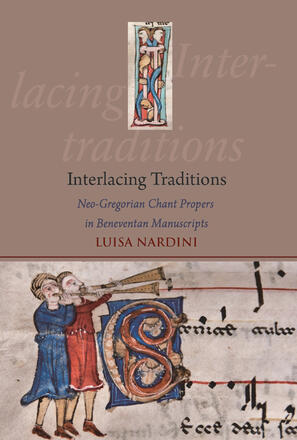
Interlacing Traditions
Neo-Gregorian Chant Propers in Beneventan Manuscripts
Description
This book is the first comprehensive study of the neo-Gregorian chants for the Proper of the Mass that circulated in the Beneventan region between the tenth and the thirteenth centuries. This extensive repertory demonstrates in extraordinary ways the struggles of local cantors to mediate between conformity to a standardized liturgy pursued by the Carolingians and the papacy, and a desire to maintain elements of the local musical culture. Some neo-Gregorian chants were locally composed, while others were imported from other regions. Both imported and local chants reveal the stylistic preferences of local cantors and the interconnections between chant composition and saints' cults and thereby shed light on issues related to the oldest musical repertories of medieval Europe, such as the Byzantine, Roman, Ambrosian, and Beneventan chants. Ultimately, they lead us into a deeper understanding of the musical culture of medieval southern Italy, a territory that, at different times, had been the theatre of incursions and invasions by many peoples (Lombards, Byzantines, Muslims, Normans, Franks, and Romans) and that was also the home to several flourishing Jewish communities. The book's rigorous historical analysis is supported by comprehensive tables, appendices, and indexes; it is also enriched by musical and textual transcriptions as well as images from relevant manuscripts.
Reviews
Few areas of Europe have left as rich and complex tradition of music from the central middle ages as the south of Italy, the old Lombard duchy of Benevento. There a local chant tradition developed in the seventh and eight centuries vaguely related to northern Lombard chant but also influenced by Rome and Byzantium. The region adopted the Gregorian chant brought by the Carolingian invaders in the ninth century apparently quite willingly, but unlike other areas of Europe, it also preserved its own liturgy and chant side by side with it until the eleventh century, and the music that the Beneventan cantors created in the tenth and eleventh century to supplement the received Gregorian liturgy and chant is an extraordinary mixture of both traditions. Few scholars working today the traditions of Latin plainsong have the intimate knowledge of this mixed repertory and its musical, liturgical, and poetic traditions as does Luisa Nardini. This study is a masterful exposition of this repertory and at the same time throws new light on the interaction between Old Roman, Gregorian, and Beneventan chant, and the rise of the new styles of the eleventh century. -- Alejandro Enrique Planchart, University of California, Santa Barbara
Interlacing Traditions fills in the critical remaining piece in the fascinating mosaic of musical culture of early medieval southern Italy. Together with existing paleographical work and studies of local chant, tropes, and sequences, Luisa Nardini's important book shows how musicians and liturgists created and adapted music for use in an important cultural crossroads. -- Thomas Forrest Kelly, Harvard University